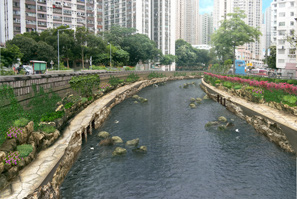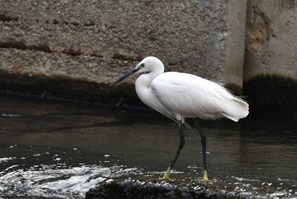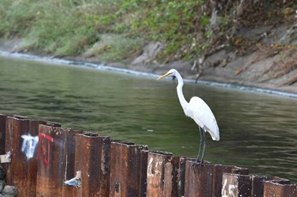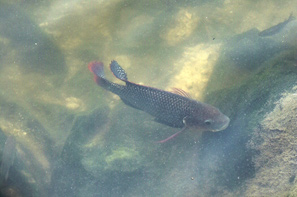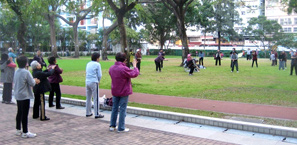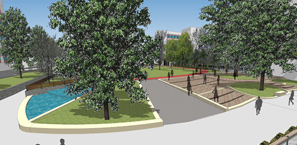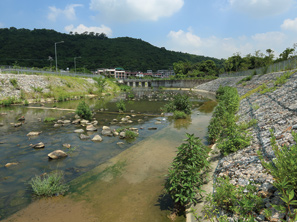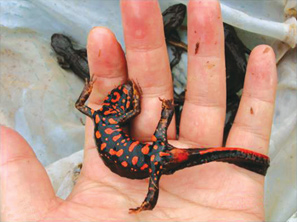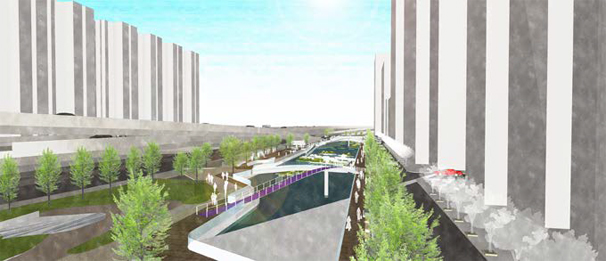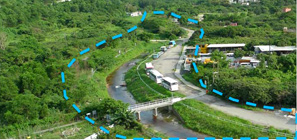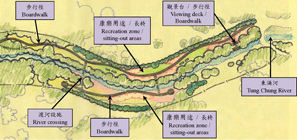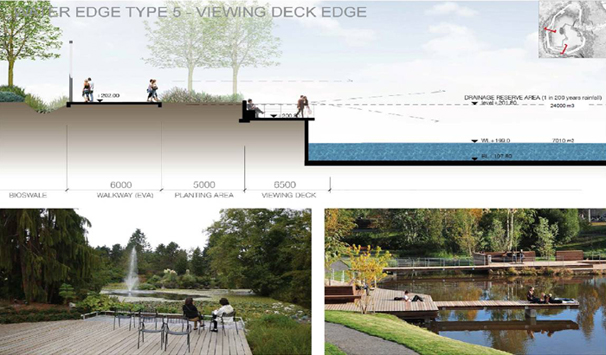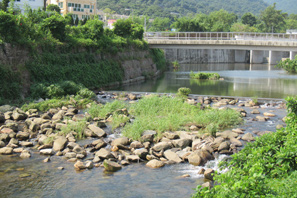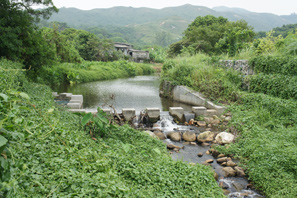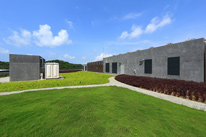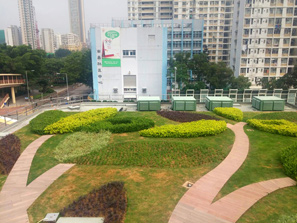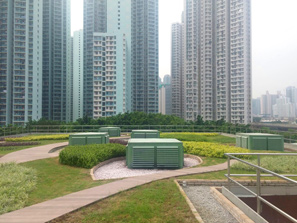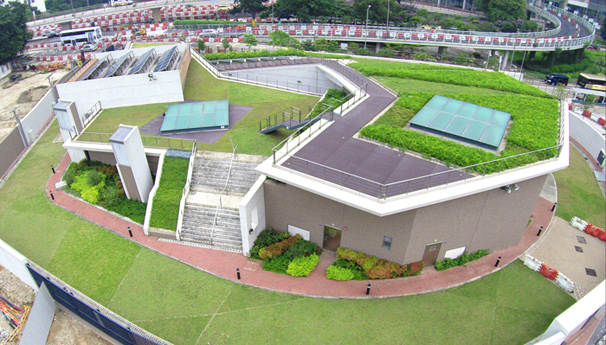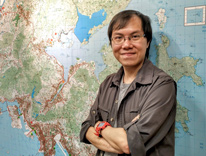DSD is committed to realising environmental management principles in every aspect of its operations. We gather the latest information in this field through duty visits and regular meetings with green groups. DSD also actively introduces innovative engineering techniques and management practices, incorporating sustainability elements such that our drainage facilities pose minimal impact to the environment during the course of construction and operation.
Blue-Green Infrastructure
DSD actively implements the concept of revitalising water bodies. In construction works for nullahs and rivers, we give priority to greening, biodiversity and aesthetic improvements in addition to ensuring effective drainage. Through Blue-Green Infrastructure, we hope to provide citizens with rivers suffused with lush greens and pristine blues, so as to offer more opportunities for the citizens to get closer to water bodies. We also conduct assessments in accordance with the “Environmental Impact Assessment Ordinance” in Hong Kong for our major drainage projects in order to evaluate and mitigate the potential environment impact.
DSD actively undertakes research in Blue-Green Infrastructure in order to explore and apply novel techniques in thedrainage facilities. Studies recently completed or currently being undertaken by DSD include habitat rehabilitation for aquatic organisms, eco-hydraulics and porous permeable paving. We will make good use of these research results in the future and apply them to our river works extensively to improve our living environment.
- Blue refers to rivers and water bodies, whereas green refers to greening landscapes.
- Build a drainage layout in urban areas that interweaves the natural environment with community characteristics and contemporary functions.
Kai Tak River Improvement Works
We are currently proceeding with Kai Tak River Improvement Works. In addition to upgrading drainage capacities, we are also taking this opportunity to inject aesthetic, greening, landscaping and ecological elements, thus revitalising the nullah into an urban green river along a serene emerald corridor. Riding on the success of Ho Chung River Improvement Works in Sai Kung, we will install fish shelters, current deflectors and boulders in the riverbed to improve microhabitats and biodiversity. We will also line the river embankment with faux rocks and grow different types of plants on both banks to accentuate the greening effect. In association with Kai Tak River Improvement Works, we will carry out beautification and improvement works for the adjacent Morse Park (No. 1) in Wong Tai Sin to in line with the theme of the river.
The water quality of Kai Tak River has been improved in recent years, and various species of birds and fish can now be found within it. Once the works are complete, Kai Tai River will be brimming with life as a green river corridor for public enjoyment and recreation.
River Improvement Works in Upper Lam Tsuen
DSD completed River Improvement Works in Upper Lam Tsuen in 2012, alleviating flood risk in the region. Given the extraordinary conservation value of upstream Lam Tsuen River, we made every effort to minimise environmental and ecological impacts of our works, in aspects ranging from engineering design to construction and management. We also worked closely with green groups and collected their opinions and suggestions so as to better protect the species inhabiting in the rivers.
- Minimising construction land uptake during river widening in order to preserve its original course
- Minimising construction land uptake during river widening in order to preserve its original course
- Building fish ladders at suitable spots, maintaining flow continuity and retaining access for river organisms across sections of the stream
- Using gabion retaining walls to promote plant growth and cultivate a natural ecology
At every stage of the construction works, we monitored the biota by species and population to get a better picture of the construction impact on the ecology. We observed extensive plant growth on gabion banks and the natural riverbed after the project was completed, with a flourishing natural habitat and improved water quality. These outcomes indicate that the conservation measures were effective: several rare species, such as the Hong Kong warty newt, were more abundant afterwards. Biodiversity was also improved along the river, with an increase in the number of bird, fish and dragonfly species.
Energising Kowloon East Initiative: Revitalisation of Tsui Ping River
We are undertaking revitalisation works in Kowloon East in order to convert a nullah approximately 1 kilometre long running along King Yip Street, King Yip Lane and Tsui Ping Road into “Tsui Ping River”. To echo with the theme, the adjacent pedestrian paths will also be beautified as part of the project, improving connectivity between pavements through e.g. building riverside walkways and landscape decking.
Associated project items include:
- Beautifying the existing nullah;
- Adding walkways on both river banks and across the two to improve pedestrian connectivity;
- Adding landscape decking atop Tsui Ping River;
- Rehabilitating the existing footbridge on Kwun Tong Road; and
- Beautifying streets near the existing nullah.
Tung Chung River Park
With the Tung Chung New Town extension under way, the Government has seized the opportunity with plans to revitalise a section of the existing Tung Chung River, upgrading its drainage capacity and transforming it into the first river park in Hong Kong. Upon completion, the improvement works will significantly enhance the neighbourhood and promote biodiversity in the river. The river park is poised to be green and water-friendly for residents who enjoy water sports and natural sceneries.
Anderson Road Quarry Development Plans
During the year, DSD worked with the Civil Engineering and Development Department and the Leisure and Cultural Services Department to build a flood retention lake in the plan of the Anderson Road Quarry Development. This project will serve to reduce flood risk in East Kowloon and provide scenic waterscape environment to residents. The Development area will also feature environmentally friendly drainage designs, including permeable pavements, rainwater harvesting facilities, and infiltration planter.
Practice Note “Guidelines on Environmental and Ecological Considerations for River Channel Design”
To further promote green river channel design within the industry, DSD released Practice Note No. 1/2015 “Guidelines on Environmental and Ecological Considerations for River Channel Design” in 2015 (The Practice Note), replacing the preceding version published in 2005.
The new Practice Note advocate the concept of Blue-Green Infrastructure concepts by outlining its benefits and importance. The document provides technical guidance in various areas, including consideration factors in the selection of river channel designs, ecological design, balancing drainage and ecological functions, and landscape design. Case studies are also included in the Practice Note to illustrate the practical application of river channel design.
Illustrative cases in the Practice Note: fish ladders in Ho Chung River (left) and Pak Ngan Heung River (right)
Roof Greening
Roof greening not only improves air quality, lower indoor temperature and reduce building energy consumption, but also enhances the building appearance, and improves the biodiversity of the surrounding environment. When identifying suitable sites for green roofs, we will engage qualified assessors to ascertain viable locations and design prior to construction. In 2015-16, we completed roof greening projects for six of our facilities.
- Sham Shui Po Nos. 1 and 2 Sewage Screening Plants
- Stonecutters Island Sewage Treatment Works
- Kowloon Bay Sewage Interception Pumping Station
- Pillar Point Sewage Treatment Works
- Kai Tak No. 4 Dry Weather Flow Interceptor
- Tseung Kwan O Preliminary Treatment Works
Kowloon City No. 1 and No. 2 Sewage Pumping Stations were bestowed the highest Platinum rating under BEAM Plus Assessment for New Buildings in late 2015, a first-time award for government infrastructure facilities. BEAM Plus New Buildings is a comprehensive environmental assessment system for buildings recognised by the Hong Kong Green Building Council.
Themed “Oasis for the Soul”, the stations stand apart from conventional drainage facilities with their exemplary performance in siting, exterior, energy use, water utilisation, choice of materials, indoor environmental quality and innovation.
Stakeholder Interview
Comment from Green Group
DSD makes a consistent effort towards the application of science to the drainage ecology management in Hong Kong. We have been working with DSD since 2012, as a consultancy services provider, on drainage channels’ biodiversity improvement and habitat rehabilitation research for aquatic organisms. DSD has been very supportive of ecological management practices we introduced from Japan, utilising fireflies and various aquatic insects as a biodiversity indicator to assess the effects of various drainage projects on the ecology. Over time, our collaboration with DSD has expanded to drainage channel design and project monitoring. As an environmental management consultant, we genuinely appreciate DSD’s scientific spirit and its support for applied biological sciences. We look forward to further and closer collaboration with DSD as we contribute to sustainable development in Hong Kong.

Our Response
We would like to thank various green groups that have supported our work. Their valuable feedback and suggestions have been an important factor which enabled us to conserve the river ecology in Hong Kong, so as to better protect the species inhabiting in the rivers.
We look forward to further collaboration with various green groups in future, striving to provide a better living environment in Hong Kong.


